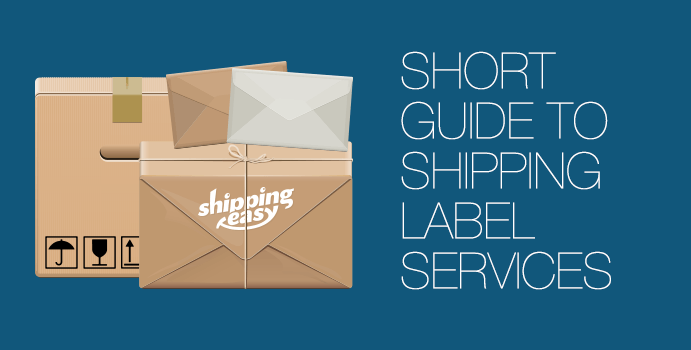Did you know you can save a ton of money on shipping just by knowing your ptions and shipping label prices?
Virtually every e-commerce seller out there can benefit from mixing up the shipping label services they use. This saves a lot of money on their overall shipping costs by finding the best shipping label prices.
This post is a guide of sorts covering each major USPS shipping service and label type designed for e-commerce sellers. The goal is to save you money by offering a shipping services comparison. I’ve included Pros and Cons of each USPS shipping label service as well as a “Sweet Spot” example to really highlight how you can save big! You’ll see how to choose a cheaper shipping service than you usually use for specific order types based on package size, weight, and final destination leading to big savings. This shipping services comparison guide is designed to help you find the best shipping label and best shipping services for your business.
Make Shipping Easy with a 30-day free trial !
Note: All shipping services in this guide are available using ShippingEasy.com and quoting USPS Commercial Rates available through ShippingEasy.com on label types that support it.
First Class Package
Good for shipping: Lightweight orders, clothes, small parts, inexpensive items.
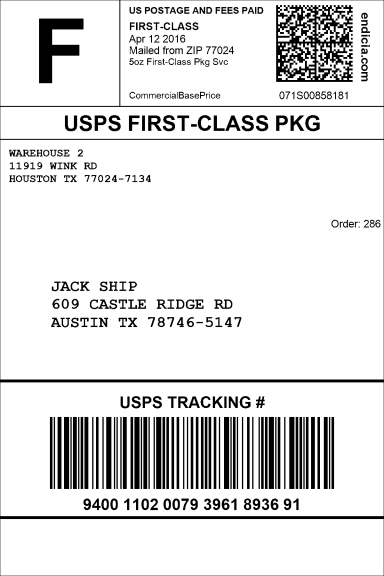
First Class Package is an extremely popular shipping service from USPS that has no direct competition. Its primary use case is the delivery of light packages from 0.1 oz. up to 15.9 oz. (First Class Retail allows for shipments up to 13 oz. The 15.9 oz. limit is only available with Commercial rates.)
Pros:
- Cheapest shipping service for < 1 lb. packages
- USPS Tracking # Included (Commercial only)
- You can use your own packaging if you prefer
Cons:
- Must use your own packaging, no free boxes available from USPS
- No included insurance
- Slow delivery time (if traveling long distances)
Most shipping services with other carriers start at 1 lb. meaning that lightweight packages under a pound all ship for the same rate. First Class Package service (FCPS) is broken down by ounces and Zones (a change that occurred with the 2019 shipping rate changes, and you can read a full breakdown here). If your item has a strict delivery deadline, FCP might not be the best option. That said, your customers are likely willing to wait if it means cheap or free shipping.
Sweet Spot Example: 3 oz. package going to Zone 4 for $3.06 or 8 oz. package to Zone 4 for $3.51 (Over $4 cheaper than a 1 lb. Priority Mail shipment at $7.67)
Media Mail
Good for shipping: Books and educational materials
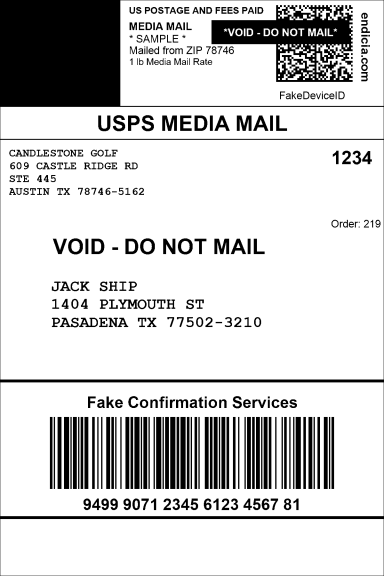
Pros:
- Extremely cheap shipping
- Good for heavy media shipments
- Only goes by weight, not Zone – so “flat rate” regardless of distance
Cons:
- Educational materials only
- Slow delivery
- Must use your own packaging
We’ll briefly cover Media Mail since so few users can take advantage of it. Media Mail is designed specifically for books of an educational focus and other educational materials only. It’s not a good idea to throw anything in a box and claim that it is media mail, you will likely get busted down the line. (It happens!)
Still, it’s worth showing in this guide as Media Mail rates start at $2.89 for a 1 lb. package, cheaper than most services out there.
Sweet Spot Example: 4 lb. package for $4.57 ($3.53 – $14.39 cheaper than Priority Mail for same weight package)
Priority Mail
Good for shipping: Medium weight packages to medium distances
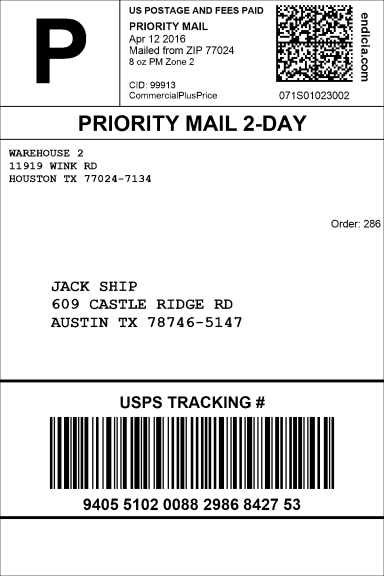
Pros:
- Free boxes and envelopes in various sizes available on USPS.com, even unusual sizes like shoe box and game board
- Use free boxes or your own packaging
- Can arrive in 2 days if package isn’t going far
- Included $100 insurance (USPS Commercial Rates)
Cons:
- Cheaper services available for heavier packages traveling further/shorter distances
- Prices increase the further it travels (Zones) and heavier it is
A change went in place in 2019: Dimensional Weight applies to Priority Mail—see our in-depth article here
Priority Mail (PM) is USPS’s main package shipping service. Priority Mail is a very flexible service allowing for a wide range of weights, sizes, and distances traveled.
One thing worth mentioning about Priority Mail is that there are multiple types of services available. These other Priority Mail services may get the package delivered in the same time window, but for a cheaper price. These Priority Mail spinoff services accomplish this through features like “Zone independence”, discounts for traveling shorter distances, and not factoring the weight of a shipment into the price. I’m going to go over those services now.
Sweet Spot Example: 2 lb. package traveling to Zone 4 for $8.24
Priority Mail: Flat Rate
Good for shipping: Medium to heavy packages far distances
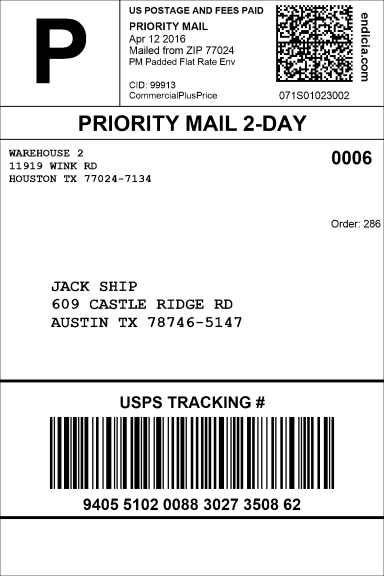
Pros:
- “If it fits, it ships!” 70 pound weight limit
- Free boxes from USPS.com and the Post Office
- Doesn’t factor weight or distance into price, one flat rate
Cons:
- Limited box sizes
- Big price jumps on bigger boxes
- Can’t use custom packaging
Hard to find much wrong with Flat Rate. Consistent rates, free boxes, doesn’t factor in the Zone or weight of the items, and can make shipping simple when all you need to know is the price, not weight or Zones. The biggest downside with Flat Rate is that it’s not precise, so you may be missing out on potential savings with regular Priority Mail, Regional Rate, or Cubic shipping labels that might suit your package better.
Sweet Spot example: Padded Flat Rate Envelope for $8.00 (just a great all-around way to ship items)
Priority Mail: Regional Rate
Good for shipping: Medium to heavy packages short distances (hence the “Regional” name)
Pros:
- Regional Rate doesn’t factor weight into price, with limit of 15 lbs. on A size and 20 lbs. on B size
- Free, large boxes in multiple sizes available on USPS.com
- Beats Priority Mail on many instances traveling short distances
Cons:
- Boxes can only be obtained from USPS.com
- Must use premade Regional Rate boxes
- Limited number of box sizes
Regional Rate may be the shipping service I talk about most, but is least known by most e-commerce sellers. This service was designed for packages that do not need to travel long distances, but are a bit on the heavier side. It’s kind of a cross between Flat Rate and regular Priority Mail that allows for more flexibility in package sizes than Flat Rate.
Sweet Spot Example: 10 lb. package traveling to Zone 4 for $9.56 ($3.09 savings over standard Priority Mail)
Priority Mail: Cubic (Flat Rate Green through ShippingEasy)
Good for shipping: Heavy, smaller items
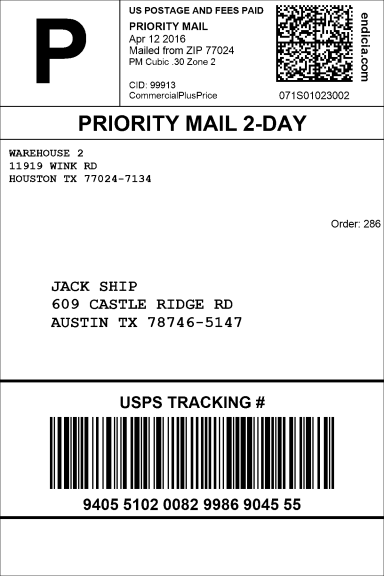
Pros:
- Allows for custom boxes
- Cheaper than Flat Rate, Regional Rate, and Priority Mail in the right circumstances
- Same rate 1-20 lbs.
Cons:
- Must enter package dimensions exactly
- Discounts aren’t widely available
- Zone is a factor in price
Cubic Shipping (Flat Rate Green through ShippingEasy) is a unique shipping service that focuses more on the dimensions of the package (volume) rather than the weight. It has the same “if it fits, it ships” idea of Flat Rate, with a lower max weight threshold, and you can use your own boxes. If you think about it, the USPS is giving you a discount for helping them get more boxes on the truck/plane by shipping small. The benefits of Cubic really shine when the packages are heavier and smaller, since it ignores weight and is cheaper the smaller your box’s total volume is.
Sweet Spot example: 7 lb. Tier 2 (0.2 cu. Ft.) package to Zone 6 for $10.82 ($10.66 savings over Priority Mail)
Conclusion
With the mix of Priority Mail, Flat Rate, Regional Rate, Cubic Rate, and First Class Packages, you can likely save more on shipping costs than you ever anticipated—just by choosing the best shipping services for your business. The trick is to find the right services for your unique product mix!
ShippingEasy supports all of the label types contained within this guide. You can even do things like assign certain shipping services to common order types to automatically select the best shipping service (ShippingEasy’s Shipping Rules). This means you’re not only saving money, but time as well. We’ll get into those tips another day!
Hope you found this guide helpful, and here’s to your savings!
Make Shipping Easy with a 30-day free trial !
Rob Zaleski
Latest posts by Rob Zaleski (see all)
- USPS 2023 Shipping Rate Changes - November 16, 2023
